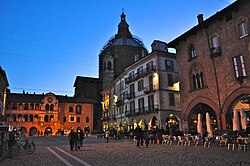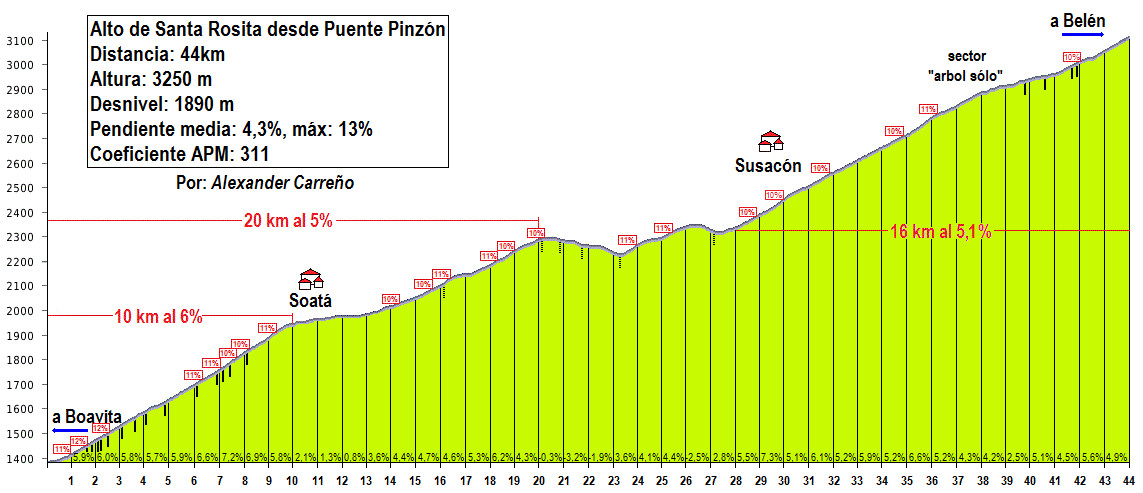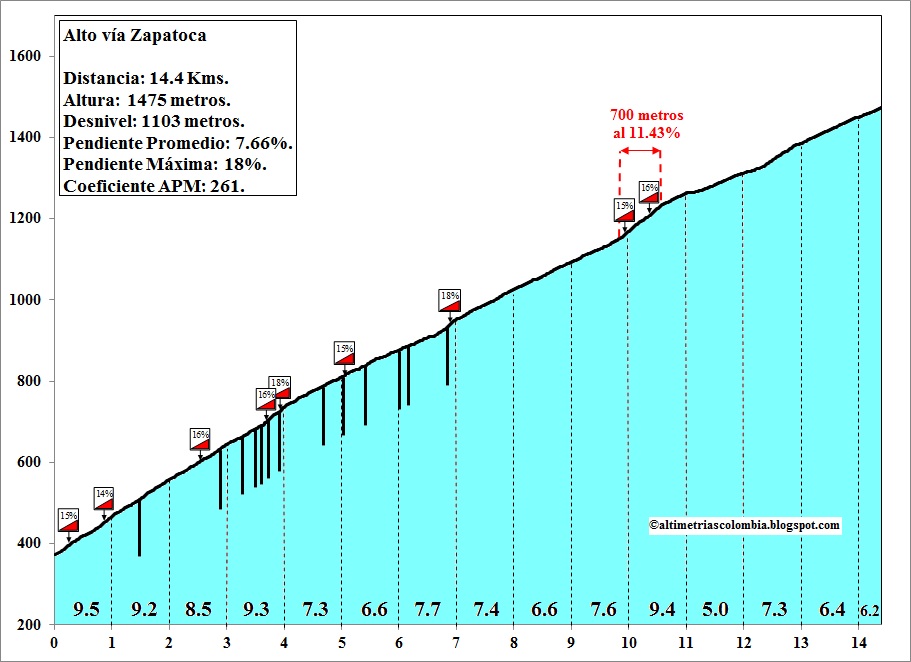Giro d'Italia: Stage 16: Bassano del Grappa - Passo Pordoi, 214 km
It's time to finish my third version of the Giro with the last six stages. The second rest day is finished and the riders have moved north to Bassano del Grappa. In my first two versions, the route never went through the Dolomites, but now it's time for classic Dolomite stage which is probably the toughest stage of the race. After leaving Bassano del Grappa, the first 35 km northwards is flat.
This changes after turning off the main road after 35 km and starting the climb to Cima di Campo. A almost 20 km long climb which is followed by a short descent and the climb to Passo del Brocon. A few flat kms at the top of Brocon before a 15 km descent to the small village of Canal San Bovo where the next climb shortly starts; to Passo Gobbera. This is a shorter climb, only 3.category, and the descent brings the riders to Mezzano, where they turn northeast on a wider and more frequently uses road in the Giro.
After a few kms of false flat, they reach Fiera di Primiero where the longest climb of the stage starts, to Passo di Rolle. The long is pretty long, but on good roads and fairly regular, around 6 % gradient for the most of the time. The top is reached at almost 2000 meters, and a short descent to Panveggio awaits. Here the fifth climb of the day starts, to Passo Valles. The descent from Valles is much longer, around 20 km, and is followed by a section false flat until Rocca Pietore where the legendary climb to Passo Fedaia starts.
The average gradient of Fedaia is about 7 %, but this don't show the whole picture. The last 5 km of the climb averages over 11 % and will probably be a very decisive point of this stage. Riders who gets tires here, could lose minutes in the last 20-25 kms of the stage. After climbing Fedaia, there is a 12 km descent to Canazei before the last 11 km to Passo Pordoi, which is Cima Coppi of this Giro. Pordoi is very centrally placed in the Dolomites and often used, but rarely as a MTF. The last time was in 2001 when Julio Perez Cuapio won the stage. That time it was also uses coupled with Fedaia. The length of this stage and the close to 5500 height meters of categorized climbs could make this an epic Giro stage.
Climbs:
52 km: Cima di Campo: 18,3 km, 5,7 %
75 km: Passo del Brocon: 11 km, 6,6 %
98 km: Passo Gobbera: 3,9 km, 6,4 %
130 km: Passo Rolle: 19,5 km, 6,1 %
143 km: Passo Valles: 6,4 km, 6,3 %
192 km: Passo Fedaia: 14,8 km, 7,1 %
214 km: Passo Pordoi: 11,1 km, 7,1 %
Profile:
Map:































